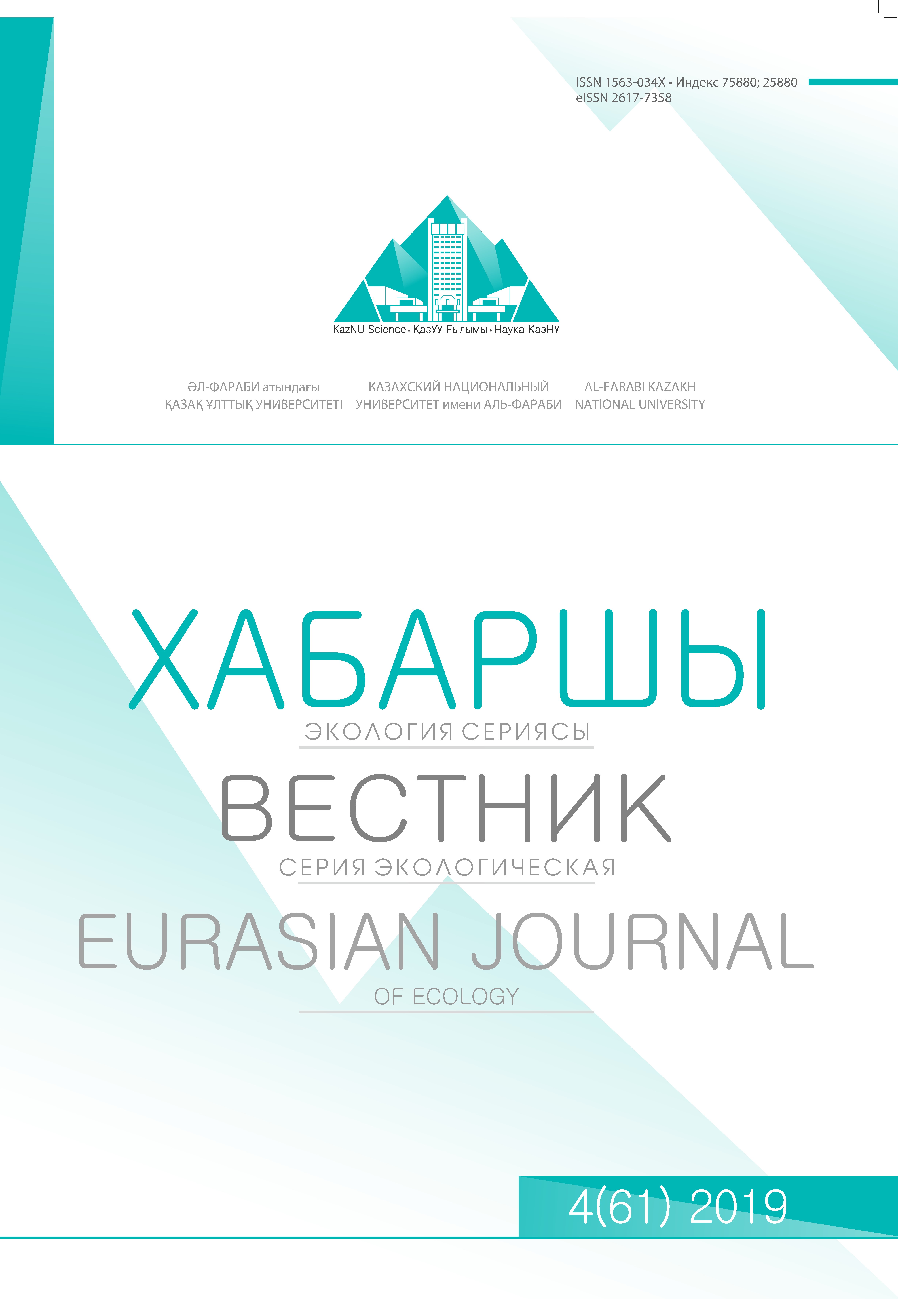Resistance of common wheat (Triticum aestivum L.) mapping population Pamyati Azieva × Paragon to leaf and stem rusts in conditions of South-East Kazakhstan
DOI:
https://doi.org/10.26577/EJE.2019.v61.i4.02Abstract
Abstract. Epiphitoty of wheat fungal diseases, particularly leaf (caused by Puccinia triticina Erikss.)
and stem (caused by Puccinia graminis Pers.) rusts, leads for the serious grain yield losses up to 60-80%
all over the Globe, including Kazakhstan. Such detrimental effect is explained by the parasitic nature of
pathogens and the ability of their spores to be spread easily with the wind. The presence of intermediate pathogen’s hosts near the fields also plays an important role in the rapid development of infection.
Therefore, comprehensive studies of pathogens, including genetic and ecological aspects, are required.
In the present study, the population including 98 recombinant inbred lines of crossing between Russian
common wheat cultivar Pamyati Azieva and UK’s cultivar Paragon was used for field trials of resistance
to leaf and stem rusts. Experiments were conducted in 2018-2019 in the fields of South-East Kazakhstan.
As a result of this study, the resistance status of each line and two parental cultivars was determined, the
promising lines with relatively high resistance to two diseases and great yield potential were identified,
a negative correlation between the severity of diseases and yield components was revealed. A better
understanding of relationships among pathogen, its host and other organisms, ways of pathogen’s distribution and its role in ecosystems will give reliable background for the developments of new common
wheat cultivars.
Key words: Common wheat, ecological testing, genotype × environment interaction, leaf rust, stem
rust.




